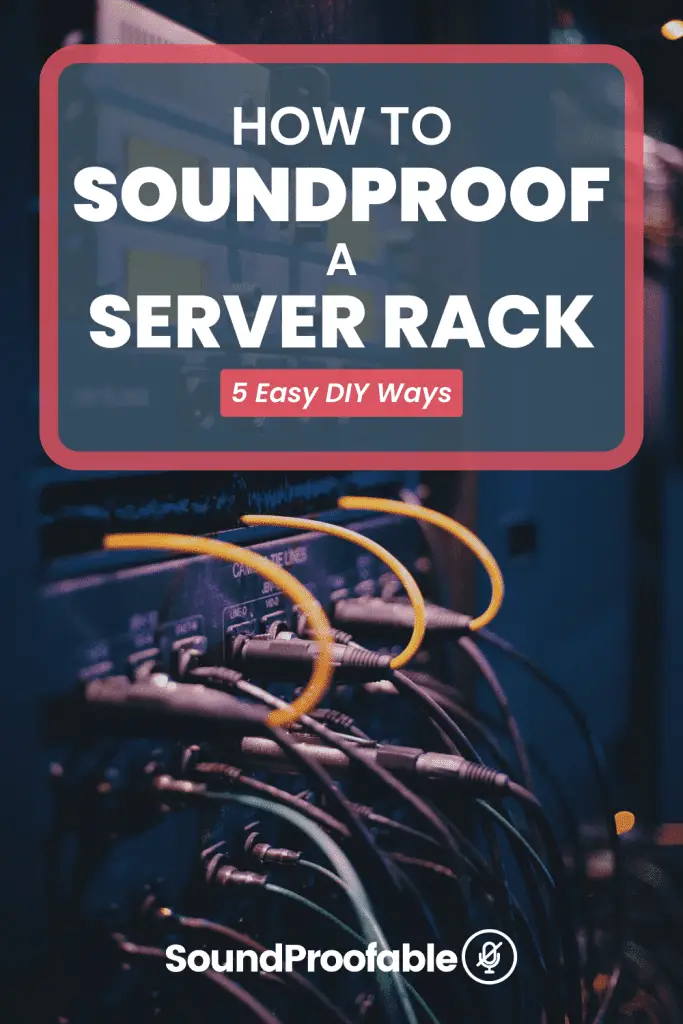Noise from servers is irritating and can be counterproductive for anyone working in close proximity with them.
Many organizations get around this by housing the servers in an isolated room so noise does not seep out to people outside the room.
This is a pragmatic approach because the servers remain well ventilated, freely dissipating heat into the room; the room can be cooled to temperatures favorable to the electronic equipment, and the room can be soundproofed to prevent noise distracting workers near the server room.
Sometimes, however, it is not practical to locate noisy network equipment from workers and visitors.
This often arises from space constraint, with home offices contributing significantly to the state of affairs. In these situations, therefore, hope lies in reducing the noise to a minimum. There are two approaches to soundproofing the unit carrying the servers/equipment.

Rack or Cabinet?
- Whereas a rack is an open frame, a cabinet is an enclosure with one or more doors. What determines the best option for your equipment?
- The stability of a cabinet favors large, heavy equipment. However, if you frequently need access to all sides of the equipment, or if your equipment needs plenty of ventilation, then a rack is more convenient.
- Is the environment holding the equipment in open or dusty; or is it well maintained? Cabinets would door well for the former, while racks can tackle the latter.
- What about aesthetics? Is your equipment in the view of clients for whom you want to portray a professional image? A cabinet would work better in such a case. Moreover, it can be locked, offering more security to the equipment.
Soundproofing an open rack
This involves adding noise reduction materials on the shelves, and it has the disadvantage of building up more heat.
It will, therefore, be imperative to install cooling fans. The two ways of achieving your soundproofing goal are to either buy a soundproofed rack like Savepoint server rack or coat your rack with soundproof materials. We will discuss 4 of these:
1. Mass Loaded Vinyl
- 1 lb per sq. foot. 1/8 of an inch thick mateial with excellent sound blocking...
- 4'x12.5' roll for easy transport to job site and for easy installation. Covers 50...
- Used to cover walls and ceilings to stop noise transfer from one room to the other
Initially developed as an industrial noise barrier, MSL is used in lining many noisy machines. Use glue or any other adhesive material to load the material in place.
No gaps should be left as they would leak sound. Be careful to avoid ripping the material as tears cannot be redeemed. MSL stands out from other soundproofing materials because it is resistant to heat.
2. Sound Deadening Mats.
These come in various forms for high-performance soundproofing. They actually are a variation of MSL that were made especially for cars, studios or homes, because of their excellent sound deadening abilities. Glue them on the rack floor or walls. You can double them, for good measure.
3. Rubberized Undercoating.
This waterproof spray is widely used in cars, sinks, walls and other surfaces. It is double-pronged in its action: while adding mass to dampen sound, it protects from rust.
It is ideal for metal racks. Its downsides include; strong smell, taking longer to dry and heat retaining properties.
4. Soundproof Server Cabinets.
These are also known as acoustic cabinets or soundproofed server racks. There are two ways of obtaining these cabinets:
Purchasing the foam-lined soundproof server cabinets.
This helps reduces noise levels and maintains ideal room temperature using their internal heat control.
When fans are installed at the rear door to handle increased heat, the server cabinet is said to be actively cooling the cabinet. Alternatively, one could choose to build their own cabinet, using locally sourced materials.
This brings the cost down. The soundproofing materials discussed earlier can also be utilized. These acoustic cabinets use passive cooling by relying on server fans.
In this regard, the differential temperature between the inside of the cabinet and the room outside is used to draw air from the front.
Minimal heat is removed, however. Passive cooling is therefore not adequate for equipment with high heat output.
Final Thoughts on Diy Soundproofing a Server Rack:
I wrap this up by saying that instead of letting ourselves, workers and visitors put up with the annoying drone of electronic equipment, we can reach for soundproof server cabinets, which come in varieties we can choose from. Let’s hush those servers!

